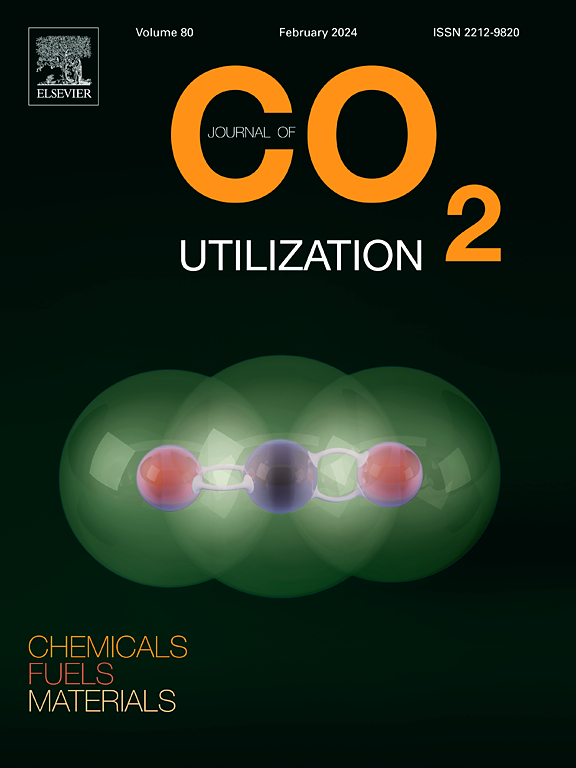Nickel mobilization during single-stage aqueous mineral carbonation of serpentinized peridotite at 185 °C and PCO₂ of 100 bar
IF 7.2
2区 工程技术
Q1 CHEMISTRY, MULTIDISCIPLINARY
引用次数: 0
Abstract
Forsterite-rich ultramafic rocks, such as serpentinized peridotites, are considered highly promising natural materials for mineral carbonation – a carbon capture and storage (CCS) technique aimed at reducing atmospheric carbon dioxide (CO2) by sequestering carbon as carbonate minerals. These rocks are commonly characterized by a high content of divalent cations, including nickel (Ni2 +), whose behavior and mobility during mineral carbonation remain insufficiently understood. This issue is critical, as the large-scale application of mineral carbonation may pose ecotoxicological risks by mobilizing specific metallic elements naturally occurring in ultramafic rocks. To elucidate possible Ni mobility during single-stage aqueous mineral carbonation, 15 g of powdered serpentinized peridotite was carbonated in a batch-type reactor for 96 hours at 185°C and a PCO₂ of 100 bar. The experiment resulted in the dissolution of forsterite and the extensive crystallization of magnesite, demonstrating that the serpentinized peridotite is a highly effective natural material for permanent CO2 storage in the single-stage carbonation processes. Nickel released during the dissolution of forsterite (approximately 50 % of the whole Ni budget) was mainly incorporated in newly formed Ni-rich phyllosilicates (more than 98 %) and a small portion was mobilized into the post-carbonation fluid (less than 2 %), reaching a concentration of approximately18 mg/kg after 96 hours. The presence of Ni in newly crystallized magnesite crystals has not been detected. These results suggest that the behavior of Ni during single-stage mineral carbonation is complex and requires careful monitoring to prevent potential negative impacts on the natural environment.
蛇纹岩橄榄岩在185℃、pco2为100 bar条件下的单阶段水相矿物碳化过程中镍的动员作用
富含橄榄石的超镁铁质岩石,如蛇纹橄榄岩,被认为是非常有前途的矿物碳酸化天然材料。矿物碳酸化是一种碳捕获和储存(CCS)技术,旨在通过将碳作为碳酸盐矿物封存来减少大气中的二氧化碳(CO2)。这些岩石通常以高含量的二价阳离子为特征,包括镍(Ni2 +),其在矿物碳酸化过程中的行为和迁移性尚不清楚。这个问题至关重要,因为矿物碳酸化的大规模应用可能会调动超基性岩石中天然存在的特定金属元素,从而造成生态毒理学风险。为了阐明单阶段水相矿物碳酸化过程中可能的Ni迁移率,在间歇式反应器中,在185°C和PCO 2为100 bar的条件下,对15 g粉末状蛇纹岩橄榄岩进行了96 小时的碳酸化。实验结果表明,菱镁矿溶蚀、菱镁矿广泛结晶,表明蛇纹化橄榄岩是单阶段碳酸化过程中永久封存CO2的高效天然材料。在橄榄石溶解过程中释放的镍(约占全部镍储量的50 %)主要结合到新形成的富镍层状硅酸盐中(超过98 %),小部分被转移到碳酸化后的流体中(少于2 %),在96 小时后达到约18 mg/kg的浓度。在新结晶的菱镁矿晶体中未检测到Ni的存在。这些结果表明,镍在单阶段矿物碳酸化过程中的行为是复杂的,需要仔细监测,以防止对自然环境产生潜在的负面影响。
本文章由计算机程序翻译,如有差异,请以英文原文为准。
求助全文
约1分钟内获得全文
求助全文
来源期刊

Journal of CO2 Utilization
CHEMISTRY, MULTIDISCIPLINARY-ENGINEERING, CHEMICAL
CiteScore
13.90
自引率
10.40%
发文量
406
审稿时长
2.8 months
期刊介绍:
The Journal of CO2 Utilization offers a single, multi-disciplinary, scholarly platform for the exchange of novel research in the field of CO2 re-use for scientists and engineers in chemicals, fuels and materials.
The emphasis is on the dissemination of leading-edge research from basic science to the development of new processes, technologies and applications.
The Journal of CO2 Utilization publishes original peer-reviewed research papers, reviews, and short communications, including experimental and theoretical work, and analytical models and simulations.
 求助内容:
求助内容: 应助结果提醒方式:
应助结果提醒方式:


